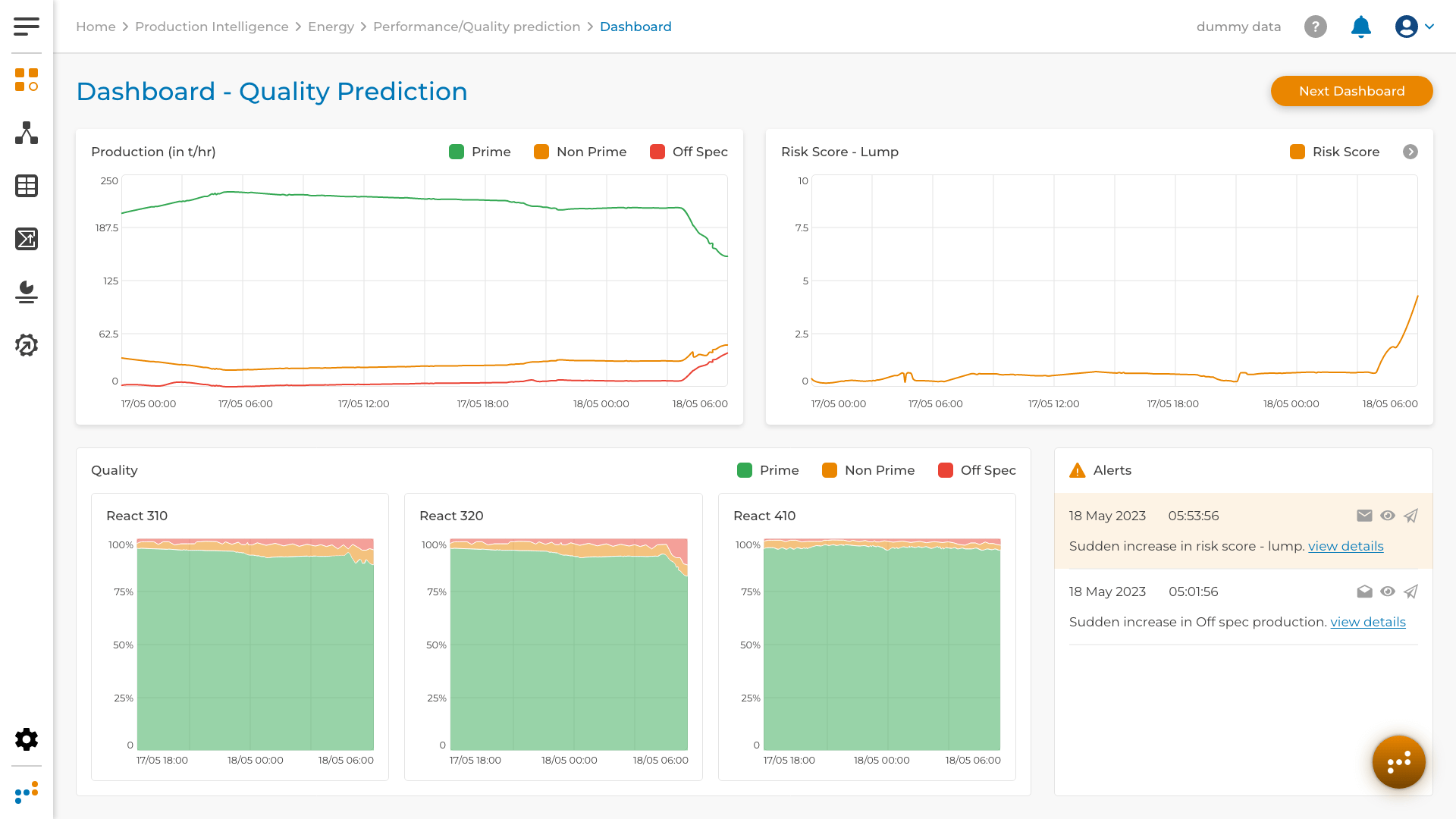Polypropylene Quality Prediction for a Petrochemical Company
Problem
A leading petrochemical company faced challenges in increasing the production of Polypropylene due to lump formation during the complex polymeric reaction process. The operator’s dependence on delayed lab-based quality estimation hindered their ability to address the issue promptly. The lump formation led to increased downtime, operational expenses, and off-spec production. Identifying the tags causing the lump formation and predicting the quality of Polypropylene in real-time became critical to improve production efficiency and prevent reactor instability.
Approach
The petrochemical company collaborated with Algo8 data scientists and domain experts to address the lump formation and Polypropylene quality prediction challenges. The following approach was adopted:
- Tag Identification and Correlation Analysis: Data scientists and experts identified crucial tags (e.g., MFI and xylene) related to the production process and lump formation. They studied historical data spanning approximately three years and created correlations among various tags to understand their impact on lump formation.
- Machine Learning Model Development: Using the identified tags and their correlations, data scientists developed a machine learning (ML) model capable of predicting the possibility of lump formation at least 5 minutes before the event occurs. The model used real-time process data to provide timely warnings to operators.
- Intelligent Forecasting Tool: In addition to the real-time quality prediction model, an intelligent forecasting tool was developed. This tool created “what-if” scenarios to simulate different situations and predict the outcomes of the production process, aiding in achieving the desired quality targets.
Benefit
The implementation of AI-based quality prediction and intelligent forecasting had significant benefits for the petrochemical company:
- Real-Time Quality Prediction: The ML model provided real-time quality predictions with an accuracy of 94%. This allowed operators to take proactive measures to prevent lump formation and maintain the desired Polypropylene quality.
- Additional Prime Grade Production: By avoiding lump formation and off-spec production, the company gained 26 days of additional prime grade production annually, leading to increased product output and revenue.
- Early Warning for Reactor Instability: The ML model also acted as an early warning system for reactor instability, helping operators address potential issues before they escalate, reducing downtime, and improving overall operational stability.
Impact
The successful implementation of AI-based quality prediction and forecasting had significant positive impacts on the petrochemical company:
- Cost Savings: By preventing lumps during the Polypropylene reaction and reducing off-spec production, the company saved approximately $11 million every year in operational expenses and product losses.
- Operational Efficiency: Real-time quality prediction and early warnings allowed the company to streamline production processes, minimize downtime, and improve overall operational efficiency.
- Data-Driven Decision Making: The intelligent forecasting tool enabled data-driven decision-making, empowering operators to explore different scenarios and make informed choices to achieve desired quality targets.
- Competitive Advantage: By leveraging AI technologies to optimize production and enhance product quality, the company gained a competitive edge in the petrochemical industry.
In conclusion, the successful implementation of AI-based Polypropylene quality prediction and intelligent forecasting led to significant cost savings, increased prime grade production, and improved operational efficiency for the petrochemical company, establishing them as a frontrunner in the industry.

